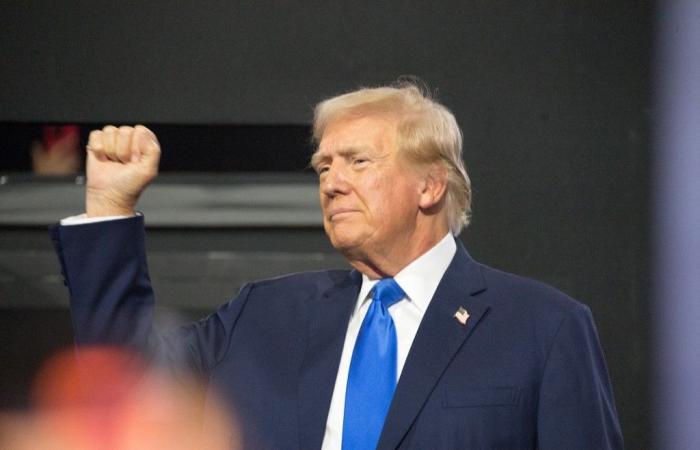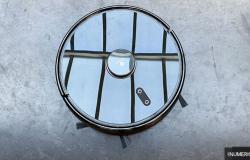It is a region of fire and blood that President Joe Biden and his emissary Antony Blinken will leave behind, who has constantly traveled the region to put out the fire on both sides without ever having succeeded. to nothing. The only ceasefire that vaguely lasted between Israel and Hamas was that of Qatar in November 2023, which allowed the release of dozens of hostages against Palestinian prisoners, and which augured a wind of change. hope for the future. Donald Trump will take office on January 20 and has promised here as elsewhere to stop the sound of weapons and the bloodshed. Is this possible?
In the meantime, for more than a year now, around fifty Israeli hostages presumed alive have continued to languish in Hamas tunnels in Gaza. While the Israeli government has announced the total success of the war waged in the small territory that has been under bombardment for months, there remains a bitter taste for anyone who still cares about the situation of these Israelis, starting with the families. If it is such a success, who still holds Israeli prisoners? Why are they still there waiting for a death that is unfortunately increasingly likely given their conditions for so many months? Weapons like words were not enough to see them return home. Recently, families have protested violently in the Knesset against the Israeli Prime Minister.
All the same, one wonders, beyond their physical condition, what state of mind they will be in towards Benjamin Netanyahu if by some miracle the day of their release comes. And above all how would they see regional developments since October 7? We also wonder if they would not, through their revolt, be those who, through their anger, would finish the political career of Netanyahu who has never made them a priority in the war of revenge. Perhaps they have high hopes for the return of Donald Trump?
An influence on Netanyahu
More generally, 40,000 Gazan civilians have since died, a ravaged territory, a Lebanon under strikes by the Hebrew state (although a ceasefire has just been concluded on November 26), and two organizations still existing despite the “success” of this conflict led by Netanyahu: Hamas and Hezbollah are still resisting, even if deep down they are pariahs of many Arab countries which on the Sunni side would like to see them disappear definitely, and who are somewhat happy that Israel has largely started the job. Countries, notably part of the Abraham Accords, signed by Trump. To this day and for two months, there is not much hope of seeing “peace” return.
Iran does not welcome Trump's return
But Donald Trump has a key advantage that no one has had for a year: he knows he has influence over Netanyahu and he may be the only one. It is he who will partly decide his fate. By supporting the war effort, and increasing aid for the security of the Jewish state tenfold, it can negotiate at the same time, a cessation of hostilities to return to a status quo before October 7: more than conflict, no Palestinian state of course, a return of the Palestinian populations to the north of Gaza, reconstruction and humanitarian aid, and a form of management of Gaza which frees the Americans and the Israelis. It remains to be seen in what form.
The rest after this ad
Many have exaggerated on Qatar by accusing it of financing Hamas, but forget to say that this was at the request of Washington with the agreement of Tel Aviv. At the same time, they forget to remember that Netanyahu has always been motivated to divide the Palestinian camp, by letting Hamas do its thing, and thus weaken the Palestinian authority. Today, Doha remains central because even if it has slammed the door on negotiations for the moment, due to the ill will of the Israelis, but also of Hamas, it has taken an unprecedented place in such a high-risk regional process. .
And Trump knows that Qatar, with the American base at Al Oudeid, is an essential ally, like Saudi Arabia, for his business in the region. Far away is the Gulf crisis of 2017: for several months, the United Arab Emirates, maneuvering in the triggering of the blockade against Qatar, have annoyed the United States, through their rapprochement with Bashar Al Assad and the non-application of the sanctions against Russia. Everything could evolve in favor of Abu Dhabi with the return of Trump who only wants one thing: a facade of peace which does not mean open conflict. Obviously, the question of the overall influence of Tehran's remaining proxies, the pro-Shia Iranian militias in Iraq and the Houthis in Yemen, remains unresolved.
What is certain is that the number one enemy of all these countries in the region – Iran – does not look favorably on the return of Trump, and has remained relatively moderate in its responses in recent months , so as not to put at odds and weaken the Democratic candidate Kamala Harris, who would not have proven to be as firm and intractable with him.
So in summary, from January 20, the trifecta in the region would be: cessation of Israeli bombings in Gaza and Lebanon, return to normal as quickly as possible and lockout of Iran to finish weakening Hamas and Hezbollah. Is this a viable long-term solution? No, but as many say: adopting a strategy for more than six months in the Middle East and applying it is almost mission impossible. The sands are much too moving there. So a four-year respite would already be a miracle, and not a mirage.
*Doctor in political science, Arab world and geopolitics researcher, teacher in international relations at IHECS (Brussels), associated with the CNAM Paris (Defense Security Team), at the Institute of Applied Geopolitics Studies (IEGA Paris), at Nordic Center for Conflict Transformation (NCCT Stockholm) and at the Geostrategic Observatory of Geneva (Switzerland).






